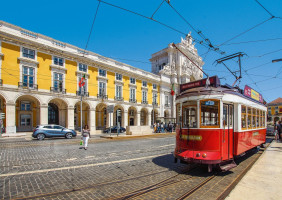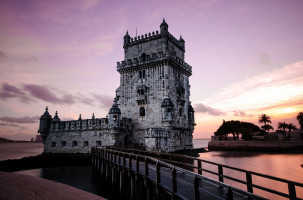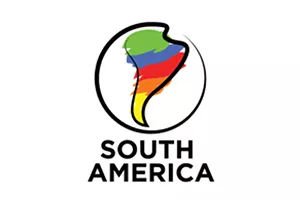Parc Natural de Mondrago Travel Guide
Parc Natural de Mondrago is a stunning natural park located in Mallorca, Spain. This pristine destination is renowned for its breathtaking landscapes, crystal-clear waters, and diverse flora and fauna. With its rich history dating back to ancient times, the park offers visitors a unique opportunity to explore the beauty of nature and immerse themselves in a tranquil environment.Top Attractions in Parc Natural de Mondrago
- Calo des Burgit
- S'Amarador Beach
- Cala Mondrago
- Ancient Watchtowers
- Walking and Hiking Trails
Parc Natural de Mondrago is Famous for
Its pristine beaches and stunning natural beauty.Top Attractions in Parc Natural de Mondrago
- Calo des Burgit
- S'Amarador Beach
- Cala Mondrago
- Ancient Watchtowers
- Walking and Hiking Trails
What's Great about Travelling to Parc Natural de Mondrago?
- Perfect for nature lovers
- Great for outdoor activities
- Offers a peaceful retreat
What's Not So Great about Travelling to Parc Natural de Mondrago?
- Limited accommodation options
- Remote location
- Not suitable for party seekers
Travel Tips for Parc Natural de Mondrago
- Check weather conditions before visiting
- Respect the natural surroundings
- Bring sunscreen and insect repellent
Important Parc Natural de Mondrago trip information
- Ideal Duration: 2-3 days
- Best Time to Visit: Spring or Fall
- Nearby Airports and Railway Stations: Palma de Mallorca Airport and Santanyí Railway Station
Per Person
60,518
*EXCLUDING APPLICABLE TAXES 4.9 Ratings
( 200 Reviews )
( 200 Reviews )
Per Person
1,09,989
*EXCLUDING APPLICABLE TAXES 4.9 Ratings
( 200 Reviews )
( 200 Reviews )
Per Person
3,60,000
*EXCLUDING APPLICABLE TAXES 5.0 Ratings
( 57 Reviews )
( 57 Reviews )
FAQ's on Parc Natural de Mondrago
Q1: What is the best time to visit Parc Natural de Mondrago?
The best time to visit Parc Natural de Mondrago is during the spring and autumn months when the weather is mild, and the landscape is lush and colorful. Summer can be hot, but it's perfect for beach lovers. Consider visiting in May or September to avoid the peak tourist season and enjoy pleasant temperatures.
Q2: Do I need a visa to travel to Parc Natural de Mondrago?
Most visitors to Parc Natural de Mondrago do not require a visa for short stays. However, it's essential to check the specific visa requirements based on your nationality before traveling. EU citizens typically do not need a visa, but travelers from other countries may need to apply for one in advance.
Q3: What are the must-visit attractions in Parc Natural de Mondrago?
Parc Natural de Mondrago is known for its stunning beaches, including Cala Mondrago and S'Amarador. Nature lovers should explore the diverse flora and fauna in the park, go hiking or cycling along the scenic trails, and visit the picturesque fishing village of Porto Petro.
Q4: Is Parc Natural de Mondrago a safe place to travel?
Parc Natural de Mondrago is generally a safe destination for travelers. However, it's essential to take standard precautions such as safeguarding your belongings, avoiding isolated areas at night, and being aware of your surroundings. As with any travel destination, it's recommended to stay informed about local conditions.
Q5: What is the local currency in Parc Natural de Mondrago and can I use credit cards?
The local currency in Parc Natural de Mondrago is the Euro (€). Credit cards are widely accepted in hotels, restaurants, and larger stores. It's advisable to carry some cash for smaller establishments or markets. ATMs are also available in towns and tourist areas for easy access to money.
Q6: What is the local cuisine like in Parc Natural de Mondrago?
offers a variety of Mediterranean dishes, including fresh seafood, paella, ensaimada (a sweet pastry), and local cheeses. Don't miss trying the traditional sobrasada sausage and enjoying a glass of local wine. Vegetarians and vegans can also find options like vegetable paella and grilled vegetables.
Q7: What transportation options are available in Parc Natural de Mondrago?
Transportation options in Parc Natural de Mondrago include rental cars, buses, and taxis. Renting a car is a convenient way to explore the park and its surroundings independently. Public buses connect different towns, and taxis are available for shorter trips. Cycling and walking are also popular ways to get around.
Q8: Are there any cultural norms or etiquette I should be aware of when visiting Parc Natural de Mondrago?
When visiting Parc Natural de Mondrago, it's essential to respect local customs and traditions. Greetings are typically warm and include handshakes or kisses on the cheek. Modest attire is appreciated when visiting religious sites, and it's customary to leave a small tip at restaurants. Remember to greet people with a polite "Hola" and "Gracias" for a pleasant cultural experience.
Q9: I am a travel agent. How can I buy travel leads of Parc Natural de Mondrago?
Register yourself as a travel agent at agents.tripclap.com and then you can buy travel leads to Parc Natural de Mondrago once your account is approved. For more details contact our support team at +91-8069186564 or support@tripclap.com



